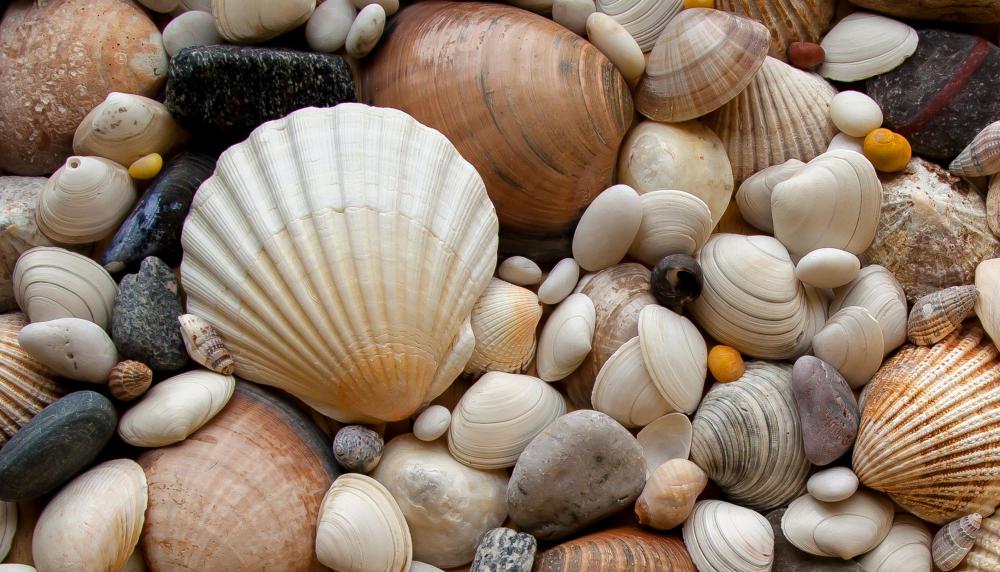At HomeQuestionsAnswered, we're committed to delivering accurate, trustworthy information. Our expert-authored content is rigorously fact-checked and sourced from credible authorities. Discover how we uphold the highest standards in providing you with reliable knowledge.
What Are the Different Types of Vase Fillers?
The different types of vase fillers include natural and man made materials. Natural fillers include such items as small river stones, rocks, and pebbles. From the seaside, fillers include sand, rock sea salt crystals, and seashells. Man made fillers include colored glass gems, multi-colored marbles, and assorted colors and sizes of glass beads. Acrylic water and acrylic cubes are used as filler in crystal vases to simulate the look of real water, while water absorbent beads are used for live arrangements.
Natural stones or pebbles harvested from riverbanks provide an assortment of shapes and sizes. Colors range from pale sandstone to deep black. Rocks also come in various sizes, patterns, natural solid colors and striated variations. River stones and rocks are available pre-packaged from local craft supply stores.

Seashells, rock sea salt crystals, and sand make interesting and colorful focal points as decorative vase fillers. Both seashells and rock sea salt crystals come in various sizes and styles. Seashells are often available sorted by shell type. Sand granules come pre-packaged by weight and are available in natural tones or a variety of colors. Rock sea salt crystals range from pure white to soft pastel colors of pale green, pink, blue, and orange.

Acrylic and glass cubes have a lustrous look. These cubes are available in clear or multiple color arrangements. Both clear and colored cubes can be used alone or in combination as vase fillers for crystal cut or glass vases. The cubes are equally suitable as a medium to hold floral stems in place.
Glass beads are available in square, round, oval, and other geometric shapes. Beads come packaged in solid colors, two colors per package, or a mixture of multiple colors. Water gel beads absorb water when pre-soaked. These beads are used when creating vase arrangements utilizing live flowers. The gel beads can be soaked and reused as vase fillers, repeatedly.

Vase fillers are popular for their ease of use, natural look, and decorative features. Artificial fillers allow the use of silk or dried flowers, and natural grasses without worrying about the care and maintenance of live plants. Acrylic water and water gel beads hold flower, pod, and grass stems firmly in place while displaying a live floral arrangement. Many vases use floral foam to hold stems. Using one of the alternative fillers allows creative, decorative arrangements to be placed in clear glass or crystal vases.
AS FEATURED ON:
AS FEATURED ON:













Discuss this Article
Post your comments